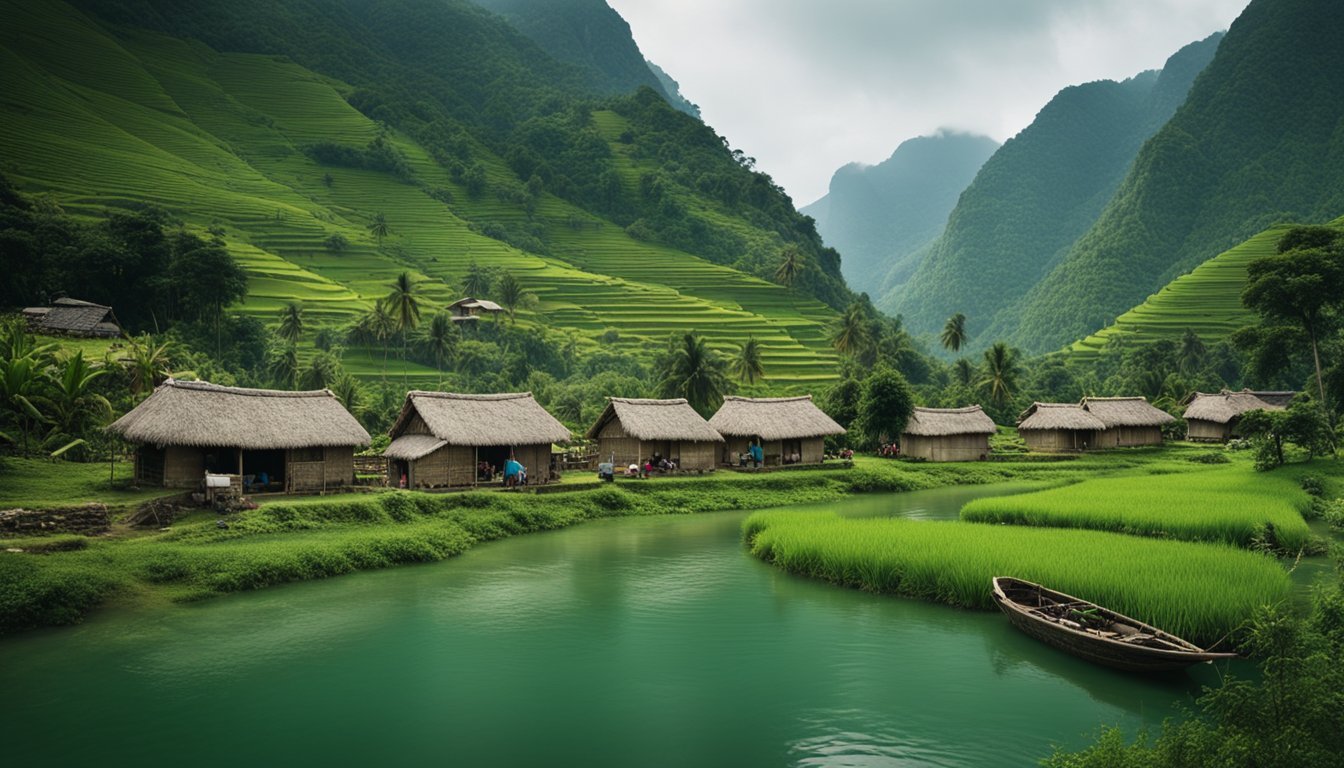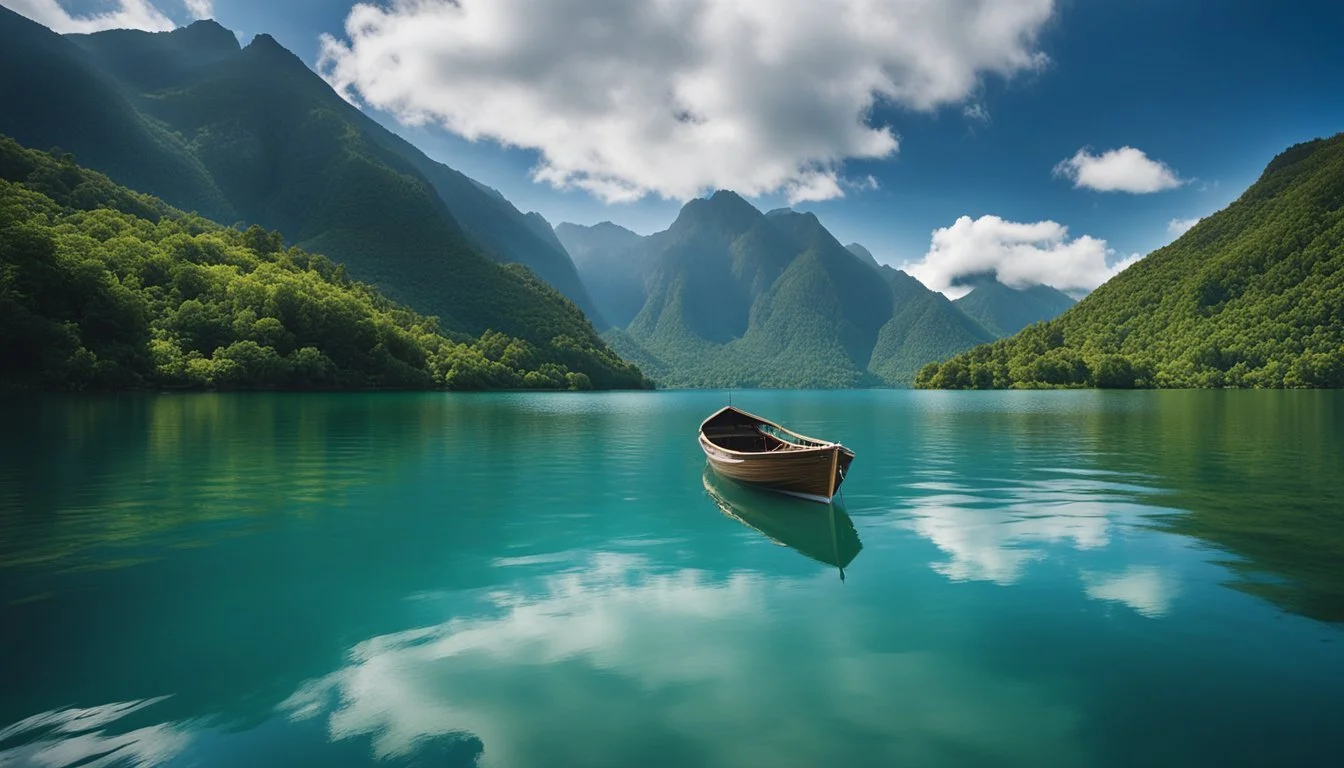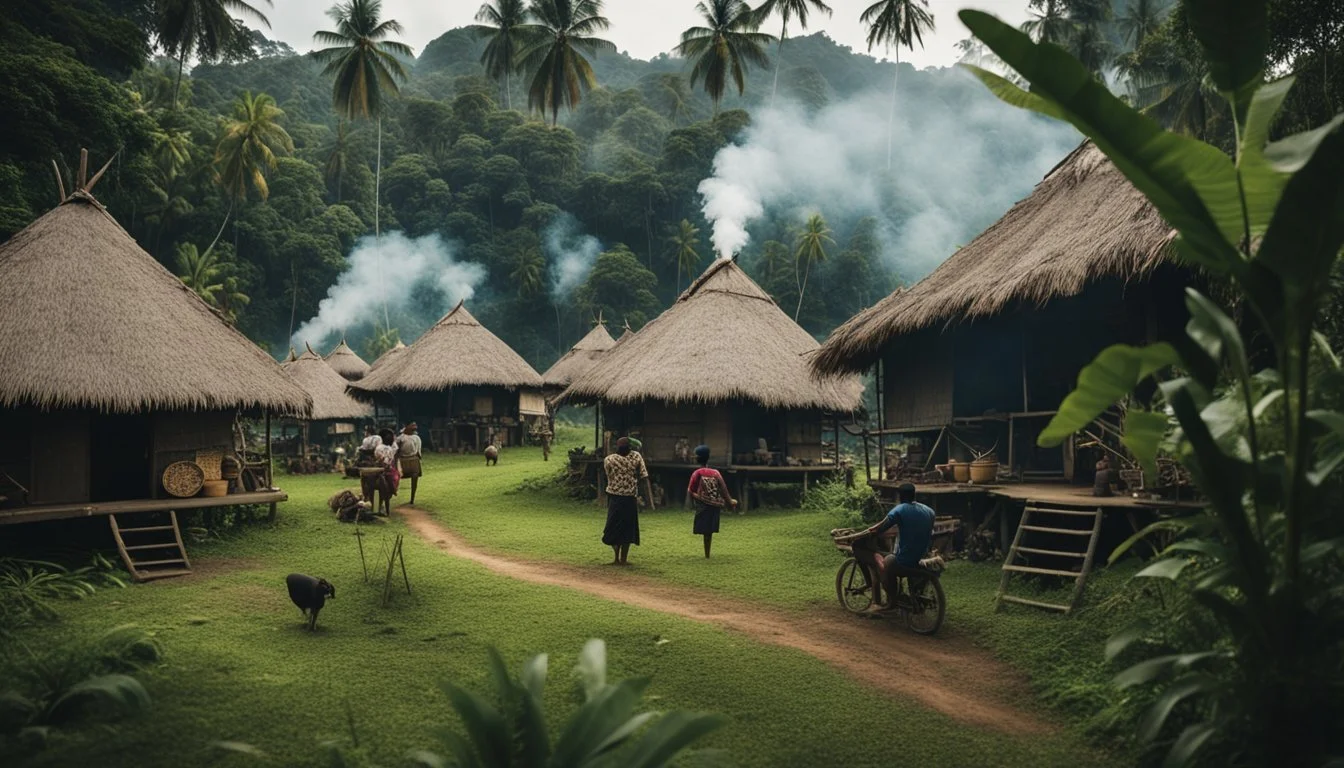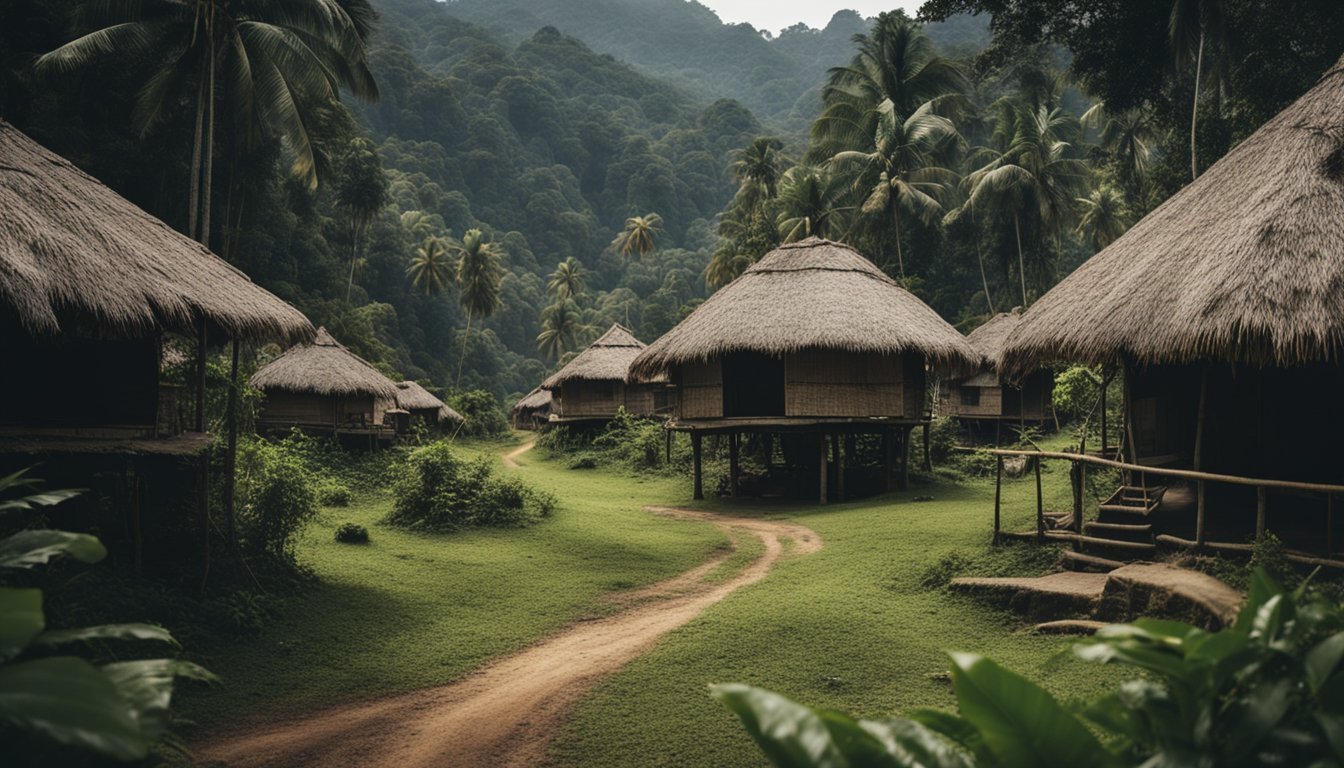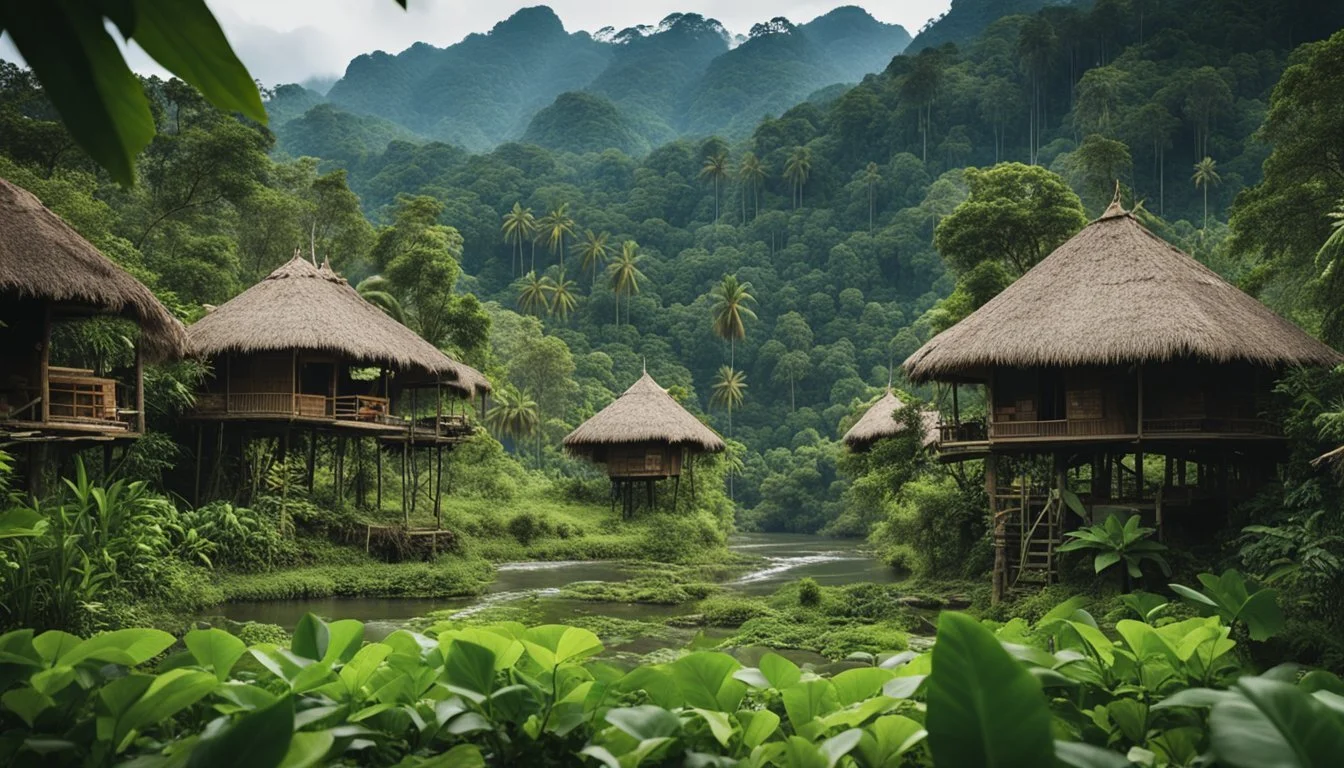18 Documentaries About Remote Villages and Tribes
A Journey Into Isolated Cultures
Stories of remote villages and tribes offer a captivating glimpse into the lives and cultures that are often hidden from mainstream awareness. These documentaries highlight not only the traditions and unique ways of life but also the struggles and triumphs of these communities as they navigate the modern world. By chronically their journeys, viewers gain a deeper appreciation for the diversity and resilience of human societies.
With an increasing number of people seeking meaningful and educational content, documentaries about remote villages and tribes provide a valuable window into worlds that are both ancient and evolving. They shed light on the environmental, social, and political issues faced by these communities, fostering a greater understanding and connection between disparate cultures.
1) The Eagle Huntress (2016)
The Eagle Huntress is a compelling documentary directed by Otto Bell. It narrates the journey of Aisholpan Nurgaiv, a 13-year-old Kazakh girl from Mongolia.
Aisholpan aspires to break a long-held gender tradition by becoming the first female eagle hunter in twelve generations of her family.
The film showcases the breathtaking Mongolian landscapes and highlights the ancient Kazakh tradition of hunting with golden eagles.
Aisholpan's determination and skills are put to the test as she trains to compete at the eagle festival in Ulgii, Mongolia. This festival, established in 1999, is a significant event for eagle hunters.
Narrated by Daisy Ridley, the documentary not only focuses on Aisholpan’s personal journey but also sheds light on the cultural and gender boundaries she confronts. Her story is a testament to resilience and the breaking of societal norms.
For more information, visit The Eagle Huntress on IMDb.
2) The Salt of the Earth (2014)
"The Salt of the Earth" is a documentary directed by Wim Wenders and Juliano Ribeiro Salgado. It offers an in-depth look at the life and work of Brazilian photographer Sebastião Salgado.
Sebastião Salgado spent over 40 years traveling across continents, documenting significant global events. His photography captures both the beauty and tragedy of humanity, including wars, famine, and mass migrations.
The documentary includes Salgado's exploration of untouched regions, highlighting remote villages and indigenous tribes. His work is renowned for bringing attention to the everyday lives and struggles of people often overlooked by mainstream media.
This film provides both a visual and narrative journey, offering insight into the photographer's perspective. It sheds light on the remote communities he encountered during his remarkable career.
For more information, visit the Wikipedia page.
3) Sami Blood (2016)
"Sami Blood" is a Swedish-Norwegian-Danish co-production. Directed by Amanda Kernell, the film is set in the 1930s and tells the story of a teenage Sámi girl named Elle-Marja. As a reindeer breeder, she faces racism and prejudice in her boarding school.
A significant element of the film is its focus on the racism experienced by the Sámi people, an indigenous population in Scandinavia. Elle-Marja's journey involves confronting this racism and dreaming of a life beyond the limitations imposed by her heritage and society.
"Sami Blood" is based on Kernell's short film "Stoerre Vaerie." This film also explores Sami themes and was notable in its own right. "Sami Blood" marked Kernell's debut feature and received international acclaim for its poignant storytelling and powerful performances.
The film provides a glimpse into the challenges faced by indigenous communities in the early 20th century. It portrays the personal struggles of leaving one's culture behind in pursuit of a different future.
Elle-Marja's transformation in the film highlights the universal theme of identity and belonging. "Sami Blood" serves as both a historical reflection and an emotional narrative, offering viewers insight into the lives and struggles of the Sámi people.
For more information, see Sami Blood on IMDb.
4) Happy People: A Year in the Taiga (2010)
"Happy People: A Year in the Taiga" is a documentary exploring the lives of those who dwell in the remote village of Bakhtia, located deep within the Siberian Taiga. The film offers an intimate look at the daily routines and survival strategies of trappers living in this isolated region.
Directed by Dmitry Vasyukov with English narration by Werner Herzog, the documentary presents stunning visuals of the Siberian wilderness. The inhabitants of Bakhtia live a life largely untouched by modern technology, relying on traditional methods that have been passed down through generations.
The film captures the rhythm of the seasons, showing how the villagers adapt to the harsh conditions throughout the year. This immersive portrayal provides a rare glimpse into a way of life that remains close to nature.
Herzog's narration adds depth, providing insight into the resilience and self-reliance of the people of Bakhtia. Through their stories, viewers gain a greater appreciation for the challenges and rewards of living in such an extreme environment.
For further details, you can explore more about "Happy People: A Year in the Taiga" on Wikipedia.
5) The Dead Eye and the Deep Blue Sea (2018)
"The Dead Eye and the Deep Blue Sea" is a gripping graphic memoir detailing the harrowing experiences of Vannak Anan Prum, a Cambodian man. Working on a Thai fishing boat, he becomes a modern-day slave. This deeply personal account sheds light on the broader issue of human trafficking in Southeast Asia.
The memoir offers vivid illustrations that bring Vannak's story to life, capturing his struggles and resilience. It portrays the daily horrors faced by fishermen trapped under brutal conditions, providing an eye-opening look into an often-ignored reality.
This documentary not only recounts Vannak's journey but also stands as a testimony to the countless others in similar situations. The combination of powerful storytelling and visual artistry makes it a compelling addition to any discussion on modern slavery.
For more information, visit "The Dead Eye and the Deep Blue Sea" Wikipedia page.
6) Reindeer in My Saami Heart (2016)
"Reindeer in My Saami Heart" chronicles the life and work of Inghilda Tapio, born into a nomadic Sámi reindeer herding family in Sweden's Arctic Circle.
The documentary highlights Tapio's journey from her traditional upbringing to becoming an influential poet and community activist. Directed by Janet Merewether, it explores the rich heritage of the Sámi people, one of Europe's oldest Indigenous cultures.
The film intertwines English and Northern Saami languages, presenting a heartfelt narrative about cultural survival and the fight for the Sámi's rights to their traditional lands.
Tapio's story also delves into painful memories of being part of Sweden's "stolen generation," where Sámi children were forced into boarding schools, severing them from their culture.
To learn more about "Reindeer in My Saami Heart," visit IMDB.
7) Into the Inferno (2016)
"Into the Inferno" is a documentary by Werner Herzog, released in 2016. It explores the power and impact of active volcanoes worldwide.
Herzog teams up with volcanologist Clive Oppenheimer to examine how volcanoes shape the lives and cultures of nearby inhabitants. The documentary features stunning visuals of eruptions and lava flows.
Their journey spans locations like the Vanatu Archipelago in the Galapagos and other remote regions. Herzog's work blends scientific investigation with a focus on human stories and indigenous spiritual practices tied to the volcanos.
More details can be found on Wikipedia.
8) First Footprints (2013)
"First Footprints," narrated by Ernie Dingo, is a detailed exploration of ancient Australia. It takes the viewer back 70,000 years ago when modern humans left Africa. These pioneers journeyed across Asia and made the first open-ocean crossing to reach Sahul, now known as Greater Australia.
This documentary brings to life a time when Neanderthals still roamed Europe, and America was uninhabited by humans. It showcases the rich history of Australia's first inhabitants through prehistoric paintings, engravings, and archaeological sites.
The film uses the world's oldest oral stories and new archaeological discoveries to illustrate over 50,000 years of Australia's past. Viewers are given insights into the lives of the continent's original people and their interactions with the unique and often dangerous megafauna that roamed the land.
"First Footprints" can be accessed on platforms like Prime Video and MagellanTV. This film is particularly fascinating for those interested in prehistoric human migration and the early history of humankind.
For more information, visit the IMDB page.
9) Isolated: The Zo'é Tribe (2018)
Isolated: The Zo'é Tribe examines the lives of the Zo'é, one of the most secluded tribes in the Brazilian Amazon.
This documentary highlights the traditional ways of the Zo'é, who rely on the land for sustenance. The film provides a rare look into their customs, such as the preparation for feasts and their remarkable archery skills.
The Zo'é use ropes tied to their feet to climb trees, showcasing their incredible agility. Their marksmanship is notably effective in hunting, making them formidable against prey like monkeys.
The documentary also touches on the Zo'é's interactions with the outside world and questions the extent to which authorities deliberately isolate them from mainstream society.
For viewers interested in indigenous cultures and the preservation of ancient traditions, this film offers a compelling exploration. The documentary can be watched on various platforms, including YouTube and Tubi.
More information on Isolated: The Zo'é Tribe
10) The Last Ice Hunters (2017)
"The Last Ice Hunters" is a documentary focusing on the Inuit community in Eastern Greenland. This film captures the life and traditions of merely 4,500 people living along a 20,000 km long coast.
Directed by Jure Breceljnik and Rožle Bregar, the documentary provides a glimpse into a 4,000-year-old history of hunting. It depicts the struggles and daily lives of this community in one of the world’s least populated and harshest regions.
The film also serves as a visual testament to their connection with nature and the environment. The challenges posed by climate change and modernity are evident throughout the narrative, portraying the hunters' resilience and cultural significance.
For more on "The Last Ice Hunters," visit IMDb.
11) Tribes, Predators, and Me (2016)
"Tribes, Predators, and Me" is a nature documentary series hosted by Gordon Buchanan. The series was first aired in 2016 and focuses on indigenous tribes living alongside some of the world's most dangerous animals.
Buchanan travels to remote locations, immersing himself in the daily lives of these tribes. He gains insight into how these communities coexist with predators like anacondas in the Amazon and crocodiles in Papua New Guinea.
The series highlights the survival strategies and cultural practices of the tribes. For instance, the Waorani tribe in Ecuador demonstrates their unique relationship with anacondas. Similarly, in Papua New Guinea, Gordon participates in traditional crocodile hunting.
Each episode offers viewers a glimpse into the delicate balance of life and nature. It captures the respect and fear that these tribes have towards their environment and the formidable creatures they live alongside.
For more information, visit Tribes, Predators & Me on IMDb.
12) Koyaanisqatsi (1982)
Koyaanisqatsi is a visually stunning 1982 documentary film directed by Godfrey Reggio. The film is notable for its non-narrative style, relying entirely on imagery and music to convey its themes.
It explores the complex relationship between nature, humanity, and technology. Through slow-motion and time-lapse footage, the film presents striking contrasts between serene natural landscapes and the frenetic pace of modern urban life.
The music, composed by Philip Glass, adds a powerful auditory layer to the visuals, creating an immersive experience. The Hopi term "Koyaanisqatsi" translates to "life out of balance," reflecting the film's meditation on ecological and social imbalance.
This thought-provoking documentary remains relevant, inviting viewers to reflect on the impact of industrialization and technological advancement on the world.
13) Tales from the Bush Larder (2013)
"Tales from the Bush Larder" is a captivating documentary series that explores the rich culinary traditions and unique ingredients found in various remote regions of Africa. Chef Kiran Jethwa travels across his homeland of Kenya and other parts of Africa to highlight the diverse food culture.
In each episode, Jethwa visits a new location, meeting local people and discovering the special ingredients that define the region. He interacts with fishermen, farmers, and other residents, learning about their culinary practices and traditions.
The series showcases the stunning landscapes and intricate cooking methods employed by these communities. From hunting for wild honey to catching mud crabs, each episode offers a glimpse into the daily lives and food habits of Africa's remote villages.
"Tales from the Bush Larder" is available for streaming on The Roku Channel. It provides an insightful look into the continent's vibrant food culture while underlining the importance of preserving these unique culinary traditions.
For more information, visit IMDb.
14) People of the Rainforest
"People of the Rainforest" (2018) explores the lives of isolated communities in the Amazon rainforest. The documentary captures the daily activities, unique traditions, and challenges faced by tribes who live without contact with the outside world.
Images and footage in the film highlight the immense biodiversity of the Amazon. These scenes show how closely connected these tribes are to their environment.
As discussed in the film, preservation of these tribes' way of life is crucial. External threats like deforestation and illegal mining continue to pose significant risks to their existence and the rich ecosystem they inhabit.
For more information, visit IMDB.
15) The Tribal Eye: The Pathfinders
In "The Tribal Eye: The Pathfinders" (1975), viewers embark on an exploration of distinct tribal art forms. Hosted by David Attenborough, the series brings attention to the unique cultural expressions of remote tribes.
This episode delves into the intricate craftsmanship of traditional West-African Dogon tribal headgear.
The show includes vivid demonstrations of how these artifacts are used in ritualistic dances.
Through detailed examinations of the artifacts, Attenborough highlights the deep cultural significance and skilled artistry involved in the creation processes.
Each piece of art serves not just as a decorative item but as a vessel of cultural identity and spiritual significance.
Attenborough's journey takes viewers to various tribes, each with its own distinct craft traditions. These encounters showcase the diversity and richness of human creativity across different environments and lifestyles.
The episode stands as a testament to the enduring legacy and vitality of tribal art, offering insights into the beliefs and practices that shape these remarkable communities.
For more information about "The Tribal Eye: The Pathfinders," you can visit its IMDb page.
16) The Embrace of the Serpent (2015)
"The Embrace of the Serpent" is an internationally co-produced adventure drama film directed by Ciro Guerra. The film showcases the journeys of Karamakate, an indigenous shaman from the Colombian Amazon, as he navigates between 1909 and 1940.
Shot almost entirely in black and white, this film provides a blend of two adventures, both centered around the themes of colonialism and the preservation of cultural knowledge.
Karamakate guides two explorers, Theo and Evan, in their different quests over thirty years. Their journeys intertwine as they uncover the impacts of colonialism on the region's tribes, portrayed with sensitive and vivid detail.
Through thoughtful storytelling and striking cinematography, "The Embrace of the Serpent" stands out as a poignant examination of lost cultures and identities.
The film has received accolades for its respectful depiction of indigenous perspectives, becoming one of the prominent films representing Amazonian heritage and ecological awareness.
17) Connected: An Autoblogography About Love, Death & Technology (2011)
Filmmaker Tiffany Shlain directs "Connected: An Autoblogography About Love, Death & Technology." This film is a mix of documentary and memoir, exploring how technology intertwines with human connections.
During the filming, Shlain’s father battles brain cancer while she faces a high-risk pregnancy. These personal struggles underscore the narrative.
The director creatively uses animation and archival footage to blend personal and global perspectives on connection in the 21st century. The movie engages with broader themes of technology's impact on personal lives and relationships.
For further information, visit IMDb.
18) The Lost World of the Maya (2019)
"The Lost World of the Maya" delves into the fascinating civilization of the ancient Maya. Known for their monumental cities and impressive pyramids, the Maya also had significant achievements in astronomy and mathematics. This documentary explores these elements, demonstrating the skilled mastery of the Maya in various fields.
Central to this documentary is the exploration of the "pre-classic era" of the Maya, highlighting their rise and the factors that contributed to their civilization’s eventual collapse. Filmed in immersive settings, it provides a vivid look into the jungles of Central America where these great cities once thrived.
The visual storytelling in "The Lost World of the Maya" is complemented by insights from modern archaeological discoveries, giving viewers a comprehensive understanding of Maya life and culture. It's a must-watch for anyone interested in ancient civilizations.
For more information, visit IMDb.
Cultural Significance of Remote Villages and Tribes
Remote villages and tribes are vital to preserving unique cultural traditions and enhancing our understanding of human diversity. These communities offer deep insights into traditional practices and foster valuable global perspectives.
Preservation of Traditions
Remote villages and tribes maintain cultural practices that have often been passed down through generations. These practices include rituals, music, dance, and craftsmanship. For example, the Guajajara tribe of the Brazilian Amazon fights illegal logging while preserving their ancient customs.
The unique languages spoken by these communities are also at risk. Linguistic diversity contributes to the world's cultural wealth. Documentaries highlight the efforts of indigenous people to sustain their heritage despite modern challenges.
Efforts to document and support these traditions can help ensure they are not lost. Visual storytelling through documentaries plays a key role in showcasing these communities' traditions.
Impact on Global Understanding
Understanding remote tribes expands our knowledge of human adaptability and resilience. The Uru-Eu-Wau-Wau tribe's interaction with modern Brazilian society illustrates the complex relationships between indigenous and non-indigenous communities.
Documentaries about these groups often reveal the harsh realities they face, such as disease and illegal activities threatening their existence. By learning about these challenges, global audiences can become more empathetic and supportive of indigenous rights.
These narratives foster a more inclusive worldview, emphasizing the importance of cultural diversity. Enhanced global awareness can drive policy changes and initiatives aimed at protecting remote communities and their environments.
Challenges Faced by Remote Villages and Tribes
Remote villages and tribes face myriad challenges, particularly the pressures of modernization and the struggle to access essential resources. Each of these issues significantly impacts their way of life and cultural preservation.
Modernization Pressures
Modernization introduces both opportunities and upheavals for remote communities. In the Brazilian Amazon, villages like those in the Javari Valley Indigenous Territory grapple with changes brought about by connectivity and technology. For instance, the Marubo people recently gained high-speed internet through Elon Musk's Starlink, dramatically altering their traditional lifestyles.
These technological advancements can lead to cultural erosion. Younger generations might prioritize modern conveniences over ancestral practices, potentially weakening cultural identity. Additionally, external influences urge tribes to assimilate into broader societies, creating conflicts within the communities.
Access to Resources
Securing basic resources remains a significant challenge. Remote villages often lack adequate healthcare, leading to persistent issues like disease and malnutrition. For example, the Javari Valley is plagued by health crises due to limited medical access.
Transportation of goods and services is another hurdle. Isolated locations make it difficult to deliver essential supplies, such as food and clean water. Indigenous activists and organizations frequently seek government and international aid to address these needs, underlining the critical state of resource accessibility.
The Role of Documentaries in Highlighting Remote Communities
Documentaries play a crucial role in educating audiences and advocating for remote villages and tribes. They offer unique insights and foster a deeper understanding of these often overlooked communities.
Educational Value
Documentaries provide a significant educational platform about remote tribes and villages. Through visual storytelling, they offer viewers a glimpse into the daily lives, cultures, and practices of these communities.
Documentaries like "Black Harvest" explore the interactions between native tribes and external influences, shedding light on complex social dynamics. This educational pathway helps demystify cultures that might otherwise remain unknown to the mainstream audience.
Furthermore, documentaries often include interviews with community members, showcasing their perspectives and voices directly. This firsthand information is invaluable for scholars, educators, and students who seek to learn about indigenous practices and histories beyond textbook knowledge.
Awareness and Advocacy
Beyond education, documentaries serve as powerful advocacy tools. They raise awareness about critical issues faced by remote communities, such as illegal logging, land disputes, and health crises. "Tribes on the Edge" exemplifies this by highlighting the persistent challenges in the Javari Valley Indigenous Territory.
Filmmakers can document and bring attention to the threats and injustices faced by these communities. This visibility often prompts viewers to become allies and supporters of indigenous rights. Documentaries also provide a platform for the communities themselves to advocate for their causes on a global stage.
Through compelling narratives and visual evidence, documentaries can influence public opinion and drive policy changes, making them essential instruments in the fight for social justice and environmental conservation.

